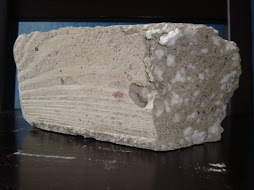Thoughts on Design
Those who have studied the Industrial Revolution know that it was a period of tremendous growth. However, during that growth, designers and innovators often lacked the foresight to consider future environmental and social implications of then current practices.
We have been able to correct some of these flaws and redesign and reapply better, less harmful alternatives. By taking the time to really look back and evaluate the thinking and technologies of the past, we have a tremendous opportunity now to build upon and learn from both the mistakes and triumphs that have layed the groundwork for where we are today.
A New Movement
We posses the capability, drive, technology, and resources to comprehensively study and understand better ways to create new things. However, as we go about this process, we cannot abandon the current products and systems already in place. We understand that there is no quick fix, and we simply want to facilitate the evolution of older practices to newer ones. This transition must incorporate deliberate, comprehensive design practices while applying the same thinking for modifying the remains of the old.
More Questions
As technologies evolve, so must our ways of collaborating and executing. Sometimes in moving forward means taking a step back to reassess what it is that is important to us as a society by asking questions like:
-What is it we want to leave behind for future generations?
-How are we going to facilitate positive growth and achievements?
-How can will instill widespread social, environmental, and moral responsibility?
forces people and societies to think about what it is they truly value. Then, the next step is how and where to start.
Subscribe to:
Post Comments (Atom)


I remember, when we first met with Meghan Dambacher, at USC, and as some kind of construction material, everyone around usdiscussed the possible idea of maybe using recycled surfboards thought we were mad. I was shocked at everyone’s reaction to this idea. For one, foam is used in construction for many different applications, fillers, insulation etc. but what about mixing it with concrete and incapsulating it? first question we received was “WHY” and “if it was usable then larger companies would have used it already. Don’t waste your money and time. you have better things to do.” It’s very easy to discredit unpracticed or unproved ideas. Most people lack the courage to try new things. Hence the adage “if it isn’t broke, why fixes it” and or “why reinvent the wheel?”
ReplyDeleteRecycling, or reusing of resources and materials, is not a new idea. Up until the Industrial Revolution, people all over the world were so poor, that recycling and reuse was order of the day. They reused everything and anything they could. Cloths, shoes and furniture were handed down from generation to generation. Most people farmed and raised their own cattle and used every part of their bounty. Nothing was wasted.
The Industrial Revolution, specifically the invention of the car, changed all that. Travel for long periods of time and far distances became easier and more convenient. This helped trade between villages, cities, states and eventually countries. The greatest invention of all, at the time, now is the single most pollutant on earth. How ironic!!!
Quoting Abraham Maslow “if the humans physiological needs are not met, the human body simply cannot continue to function.” Those needs are Food, sleep, water, shelter, breathing etc. Even though this is a very obvious concept to comprehend, why did it take our inventors and scientists about 100 years to finally admit that, we are in fact damaging our environment at such an alarming rate that, if we don’t do something about soon, we will loose our right to food, water, oxygen etc. (there are those to discredit the notion that our environment is trouble).
The fact is, as humans, we don’t like to think too much about the past. I have heard “forget about the past. Let bygones be bygones and move on.” Maybe its time to think of all of our past mistakes and achievements and instead of contradictions, start working on collaboration of ideas and correct our mistakes. And hopefully reverse the slow deterioration of our environment.
A Revolution usually starts with an idea, and is carried out by a person until the idea reaches the masses. To reach the masses, Revolutionary ideas require Revolutionary unorthodox approach to execution. To change our conventional way of doing things we must have such an approach.
Here we are a year or so after meeting Meghan, we broke almost every rule and for sure reinvented few things along the way. It’s been hard and very costly but very fun and rewarding at the same time. I encourage all the readers of this blog, and others, to start becoming revolutionaries in their own rite and help us find other uses to old and toxic surfboards. We need suggestions, proven or otherwise, to put old boards to better use. And just maybe we can contribute to correcting a portion of our past mistakes and hopefully be part of the new Revolution: to save the environment and man kind.
“History is of peoples memory, and without memory, we are demoted to the lower animals!” Malcom Little
Sarkis Vartanian
Chief Ecoist